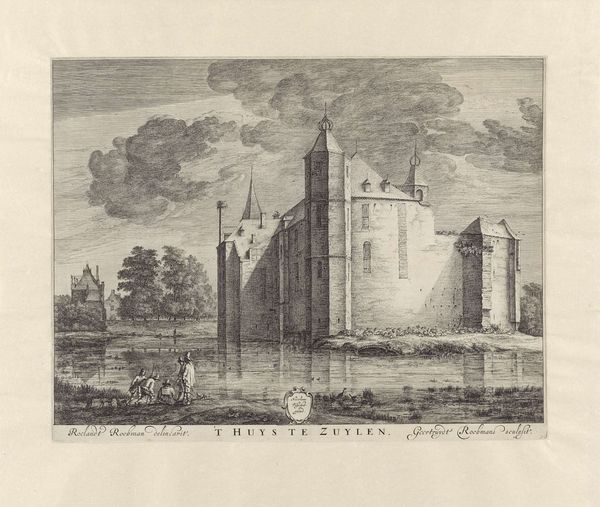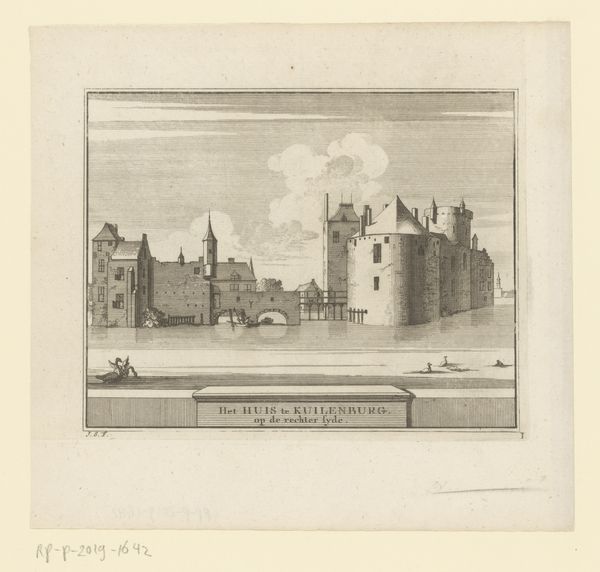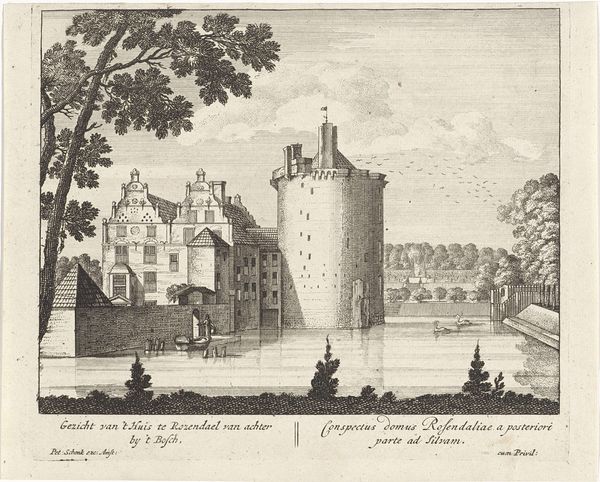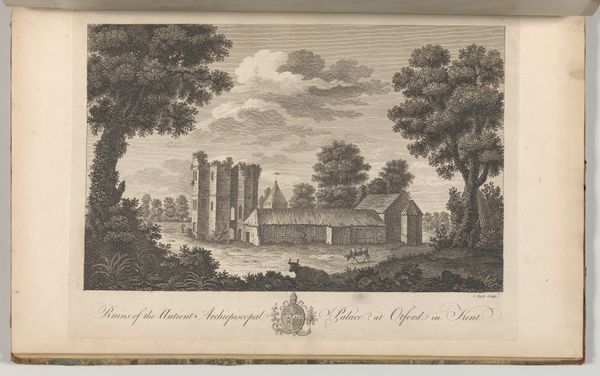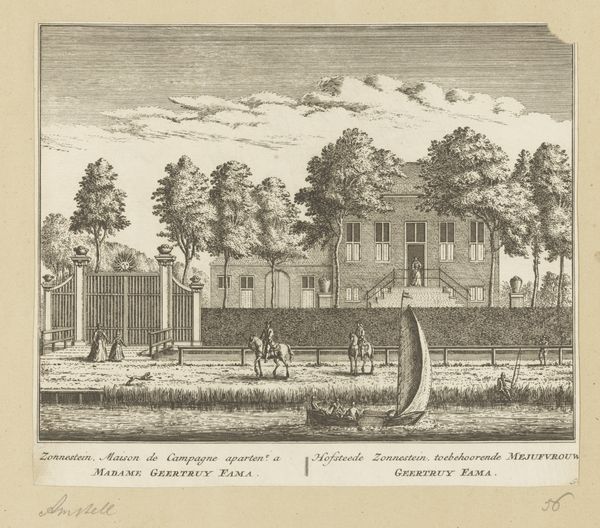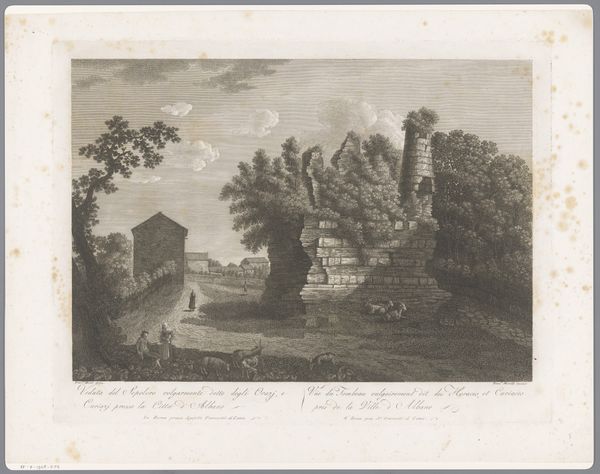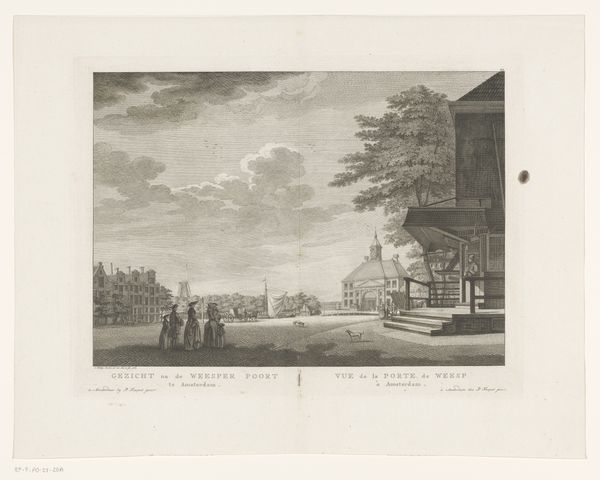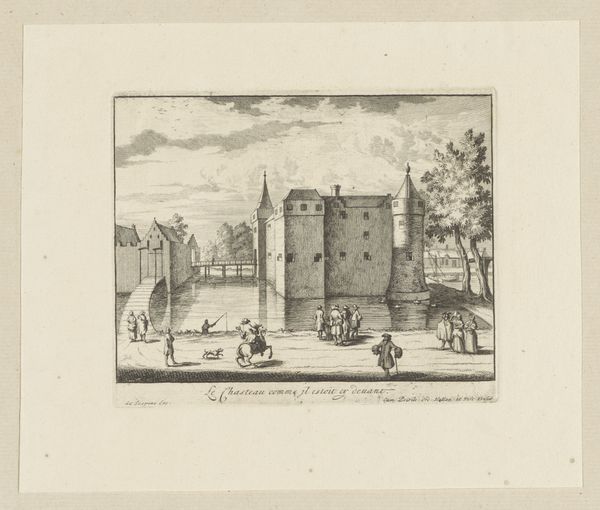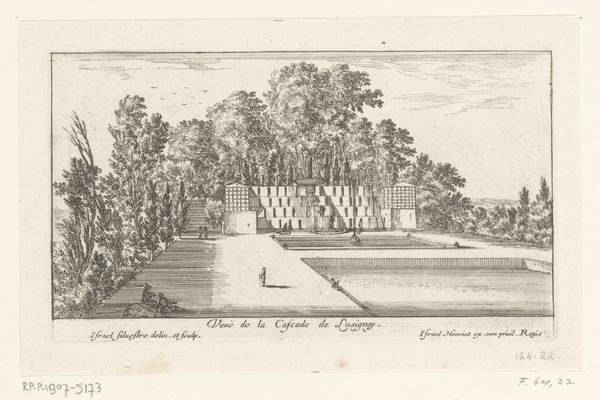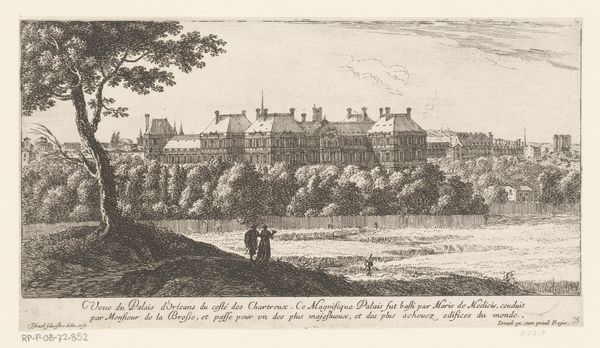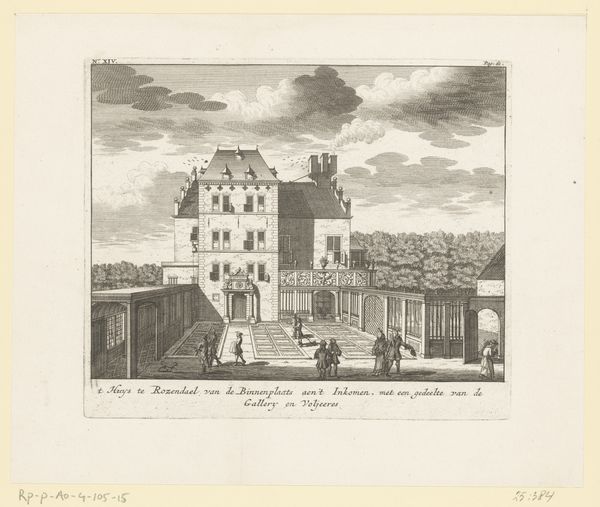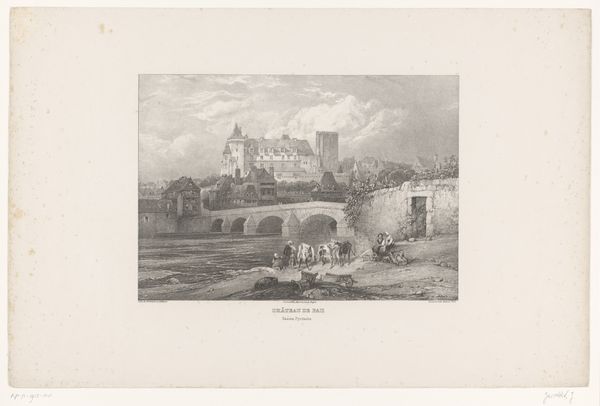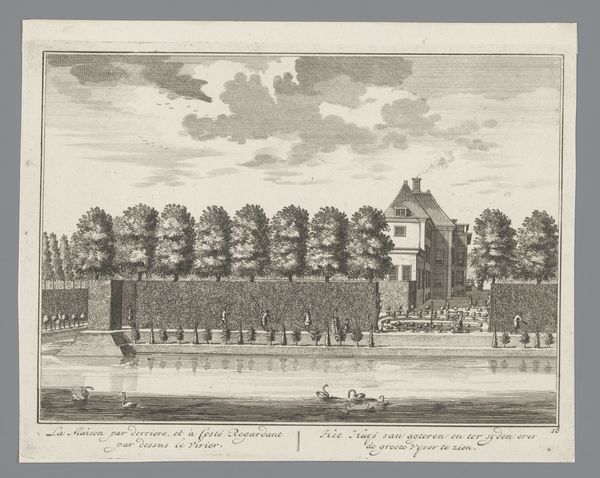
print, engraving
#
baroque
#
dutch-golden-age
#
ink paper printed
# print
#
landscape
#
line
#
cityscape
#
history-painting
#
engraving
Dimensions: height 171 mm, width 205 mm
Copyright: Rijks Museum: Open Domain
Curator: Looking at this engraving, "View of Rosendael Castle from the Woods," created by Jan Smit in 1718, one immediately sees a powerful depiction of status and order during the Dutch Golden Age. Editor: The meticulous line work is what strikes me first. It gives a sense of established presence; a quiet declaration, rather than something meant to be boisterous or awe-inspiring. Does it evoke any particular symbolic motifs for you? Curator: Certainly. Rosendael Castle itself acts as a symbol of entrenched power and wealth. These images, circulated as prints, played a role in constructing and reinforcing ideas about noble lineage and control. They broadcast the importance of these families, even to those who would never directly interact with them. Editor: I find it fascinating how the carefully cultivated gardens in the background are rendered. There's such a stark contrast between that controlled space and the implied wilderness of the forest it is "viewed from." Does this tell us something about how the nobility sought to separate themselves? Curator: Exactly! It speaks volumes. The engraving reinforces the visual language of Baroque art. The owners wanted to make a clear distinction between cultivated space and untamed nature. The controlled garden reflects rational governance and dominance over the natural world—essential characteristics projected by the elite. These prints were part of a deliberate strategy. Editor: This reinforces how the nobility sought to manufacture not only their surrounding environments, but also their image within broader society through circulation of engravings and related printed matter. I'm captivated by the stoic feeling that the composition communicates. What were your key insights, thinking through it? Curator: Considering it from a historical viewpoint highlights how art solidifies hierarchies. The landscape isn’t just scenery; it is a statement of power dynamics, reflecting the socio-political landscape of the period. Editor: Seeing this print today through its symbolism gives us an enriched insight into the attitudes towards power in the Dutch Golden Age. It is incredible to consider all the visual weight conveyed by something we might at first consider just a depiction of a castle!
Comments
No comments
Be the first to comment and join the conversation on the ultimate creative platform.

